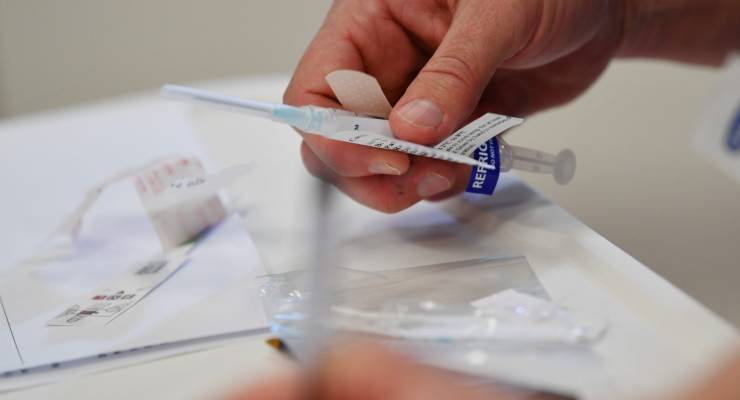
The 2020 budget wasn’t just a list of big spending measures. It was also a statement of hope, and an act of staring into a crystal ball. Here’s what the government is banking on happening.
The pandemic gets better
The budget assumes Australia will continue to keep a handle on the COVID-19 pandemic over the next year. That means localised outbreaks, like the one we saw flare up in Victoria, will be “largely contained”.
It means outside Victoria restrictions will continue to ease, and borders around the country, except for Western Australia, will reopen by the end of the year.
Much of Treasurer Josh Frydenberg’s roadmap to recovery rests on a series of assumptions. But if the chaos and unpredictability of 2020 has taught us anything, it’s that we should be very wary of assuming anything ever.
But the biggest pandemic-related assumption is that a vaccination program will be fully in place by the end of 2021. Given the speed of scientific progress, there’s every chance we will have a working vaccine by then, but the logistics of putting together a full immunisation program are still difficult.
The budget also models a best-case scenario, where a vaccine is available by July next year and GDP grows by an additional 1.5%. There’s a worst case scenario too, where further outbreaks of COVID-19 put a handbrake on economic recovery, consumer confidence falls, and growth is 1% lower than anticipated.
The economy gets better
The budget assumes Australia’s economy will look fairly v-shaped next year. The budget papers expect Australia’s real GDP to fall 3.75% this calendar year, but to grow at 4.25% in 2021 — double what it was before the pandemic.
It’s a big call which underpins a lot of the government’s fiscal thinking, including in assistance to the unemployed and other areas of social security and welfare, where spending will fall to below 2019 levels from next year, “reflecting the impact of and recovery from the COVID-19 pandemic”.
The government says recovery will be driven by easing virus containment measures, and improving business and consumer confidence.
So really, it all depends on if …
Australians (especially the rich) will spend
For the recovery to look as v-shaped as Frydenberg wants, middle- and high-income earners will have to spend their tax cuts. Businesses will respond to asset write-offs and tax offsets by investing in stuff. A wage subsidy of $200 a week lasting just 12 months will be enough to get them hiring young Australians, who in turn will spend and keep the economy humming along.
All in all, it’s a whole lot of ifs. Another assumption is that …
The population slowly rises again
The budget papers assume a gradual return of international students and permanent migrants, and a gradual increase in international travel through to the end of next year.
At the same time, net overseas migration is expected to go into the negative (-72,000) next year for the first time since 1946, before finally returning to above 200,000 in 2023-24.
That longer-term return to normal assumes people keep coming to Australia. And even the short-term forecasts could be tinged with optimism — as the ABC reported this week, international student numbers have fallen right off a cliff.








And another assumption: we don’t need the ANAO!! Its total resourcing is down from $112m to $98m.
That’s what happens when you dare to criticise this government – as the ABC has already learned.
“Once upon a time, there was a Treasurer named Josh, who thought that confidence was a trick, and that the Budget died and came “back in black”……”
…. How are we going so far?
The case for a vaccine is curious. Nobody asks the experts why they think one will be now available by the end of 2021, just as nobody asked them at the start in March 2020 why they thought one would be available by the end of this year.
A successful vaccine has never been developed for a coronavirus. No doubt a whole lot more effort has gone into finding one for this particular coronavirus, but what makes experts ‘optimistically’ pump for end-2021? The timeline sounds just a little gratuitous to me.
As to this spurious vaccine, I certainly won’t be racing down to become a guinea pig for Big Pharma!
Me either. For the life of me why do these journalists keep pumping the magical cure-all super beaut vaccine as the remedy for every ailment life brings us. If restrictions continue to ease and outbreaks are largely contained then why the need for a vaccine?…especially when they don’t work against the corona virus. Another no-brainer.